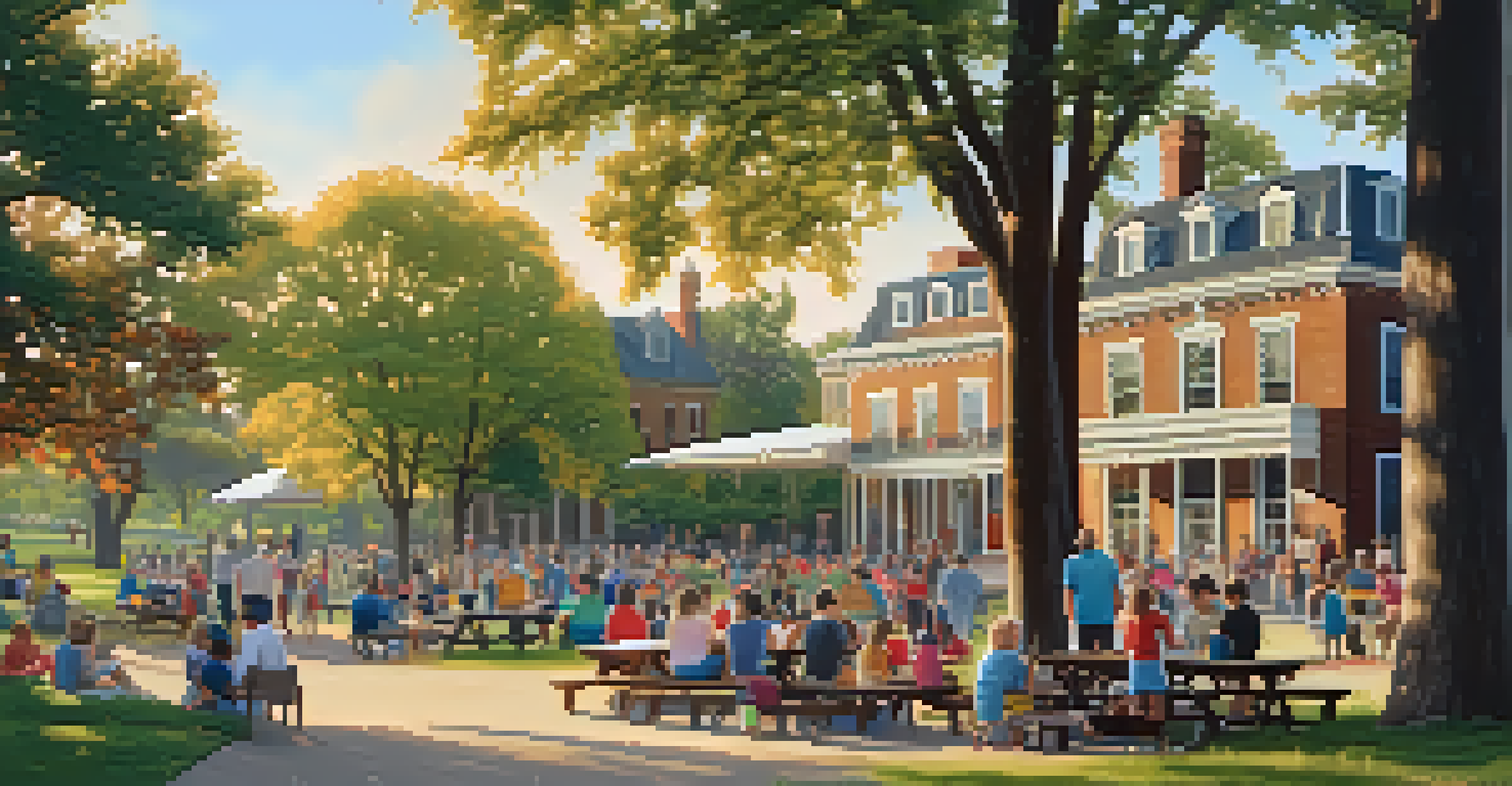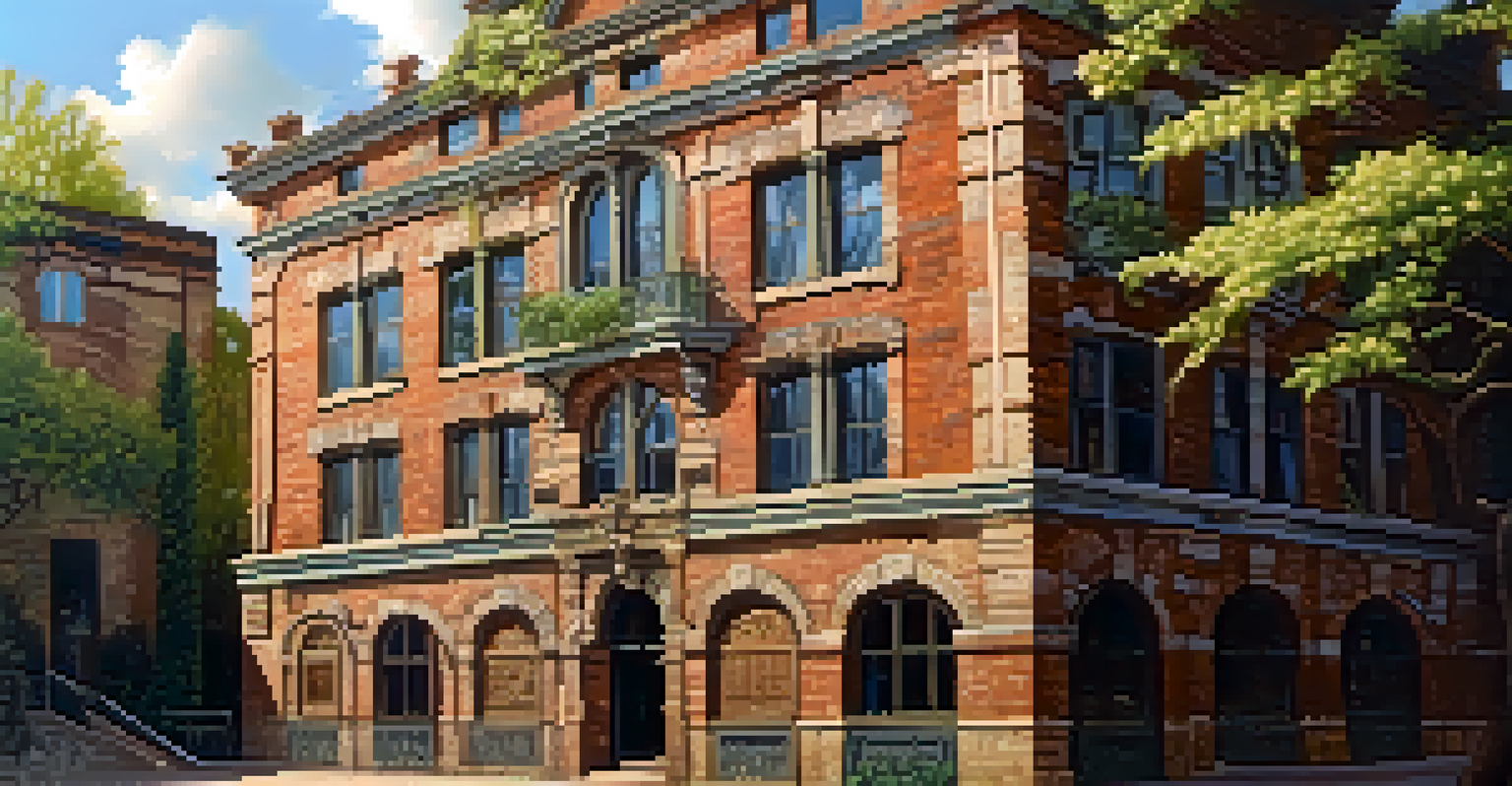The Importance of Historical Preservation in Urban Planning

Understanding Historical Preservation in Urban Contexts
Historical preservation refers to the practice of safeguarding buildings, sites, and cultural artifacts that hold historical significance. It’s not just about keeping old structures standing; it’s about maintaining the stories and identities that shape our cities. In the context of urban planning, this means integrating these preserved elements into the broader vision for development and growth.
The past cannot be changed. The future is yet in your power.
Urban areas are constantly evolving, but as they grow, it's crucial to recognize what makes them unique. Historical sites often serve as anchors in the urban landscape that connect residents to their heritage. By prioritizing preservation, planners can ensure that the character of a city remains intact while still allowing for modern development.
Moreover, historical preservation can enhance community pride and identity. When people see their history reflected in their surroundings, it fosters a sense of belonging and continuity. This emotional connection can be a powerful motivator for community engagement and participation in local initiatives.
Economic Benefits of Historical Preservation
Investing in historical preservation can provide significant economic advantages to urban areas. Restored historical buildings often attract tourists, boosting local businesses and generating revenue for the city. Moreover, preserving these sites can be more cost-effective than new construction, as they typically require fewer resources and can benefit from existing infrastructure.

Additionally, neighborhoods with preserved historical elements tend to have higher property values. Buyers frequently seek out homes in areas with character, which can lead to increased demand and ultimately a more prosperous community. This ripple effect can invigorate local economies and create a thriving atmosphere.
Historical Preservation Enhances Identity
Preserving historical sites fosters community pride and a sense of belonging, connecting residents to their heritage.
Furthermore, historical preservation can stimulate job creation. Restoration projects often require skilled labor, which can lead to employment opportunities for local contractors, artisans, and craftspeople. This investment in human capital not only supports the economy but also fosters a sense of community as residents work together on preservation initiatives.
Cultural Significance of Preserving History
Cultural heritage is an essential part of our identity, and preserving historical sites allows future generations to connect with their past. Each building or landmark carries stories and experiences that contribute to the fabric of a community. By keeping these narratives alive, we ensure that the lessons learned from history are not forgotten.
Preservation of one's own culture does not require contempt or disrespect for other cultures.
Moreover, historical preservation promotes diversity and inclusiveness in urban planning. Many cities have rich histories that include various cultural influences, and preserving these sites can honor and recognize those contributions. This can create a more vibrant urban tapestry that reflects the complexities of our society.
The act of preserving our history also encourages intergenerational dialogue. Older residents can share their experiences and stories with younger generations, fostering understanding and respect for different perspectives. This connection not only enriches community life but also builds a sense of continuity and resilience.
Environmental Advantages of Preservation
Preserving historical buildings can have significant environmental benefits, particularly in terms of sustainability. Renovating existing structures often requires fewer resources than demolishing and building anew, reducing waste and conserving materials. This aligns perfectly with the principles of sustainable urban planning.
Additionally, older buildings are often designed with elements that promote energy efficiency, such as thick walls and natural ventilation. By restoring these structures, we can capitalize on their inherent sustainability features while updating them with modern technology. This blend of old and new can create environmentally friendly spaces.
Economic Growth Through Preservation
Investing in the restoration of historical buildings can boost local economies by attracting tourism and increasing property values.
Furthermore, preserving historical sites can contribute to urban greenery. Many historic areas have gardens, parks, or green spaces that enhance biodiversity and improve air quality. By maintaining these areas, we can create healthier urban environments that benefit both residents and local wildlife.
Challenges Faced in Historical Preservation
While historical preservation offers numerous benefits, it also comes with its own set of challenges. One significant issue is the financial burden of restoration and maintenance, which can deter both developers and municipalities from pursuing preservation projects. Securing funding and resources is often a crucial first step to overcoming these hurdles.
Another challenge is the potential for conflict between modern development and preservation. As cities grow, developers may see historical sites as obstacles to progress, leading to tension between community members and stakeholders. Effective communication and collaboration are essential to finding a balance that respects both heritage and the need for new infrastructure.
Additionally, there can be a lack of awareness or understanding of the importance of preservation among the general public. Education and advocacy are vital in promoting the value of historical sites and garnering support for preservation efforts. By raising awareness, we can create a more informed community that values its historical assets.
The Role of Policy in Supporting Preservation
Policies play a crucial role in facilitating historical preservation within urban planning. Local governments can create incentives for developers to restore and maintain historical buildings, such as tax credits or grants. These policies can encourage investment in preservation while ensuring that developers still see a return on their investment.
Moreover, zoning laws can be adapted to protect historical sites by creating designated historic districts. These areas can help ensure that any new development is in harmony with the existing architectural style and character of the neighborhood. This strategic approach can enhance both preservation and community aesthetics.
Community Engagement is Essential
Active community involvement in preservation initiatives ensures that efforts reflect local values and foster a commitment to protecting heritage.
Collaboration between policymakers, preservationists, and community members is also essential in crafting effective preservation strategies. Engaging stakeholders in the decision-making process can lead to more comprehensive and inclusive policies that reflect the needs and desires of the community, ultimately supporting a more sustainable urban future.
Community Involvement in Preservation Efforts
Community involvement is key to successful historical preservation initiatives. When residents are actively engaged, they are more likely to advocate for the protection of their local heritage. This grassroots support can lead to a stronger commitment to preservation efforts and ensure that initiatives are reflective of the community’s values.
Local organizations and volunteer groups can play a vital role in promoting awareness and education around historical preservation. By organizing events, workshops, or tours, they can help foster appreciation for local history and its significance. This community-centric approach can empower residents to take ownership of their historical sites.

Moreover, collaboration between community members and local governments can enhance preservation efforts. When both parties work together, they can identify priorities, share resources, and develop strategies that benefit everyone. This partnership not only strengthens community ties but also ensures the long-term success of preservation efforts.